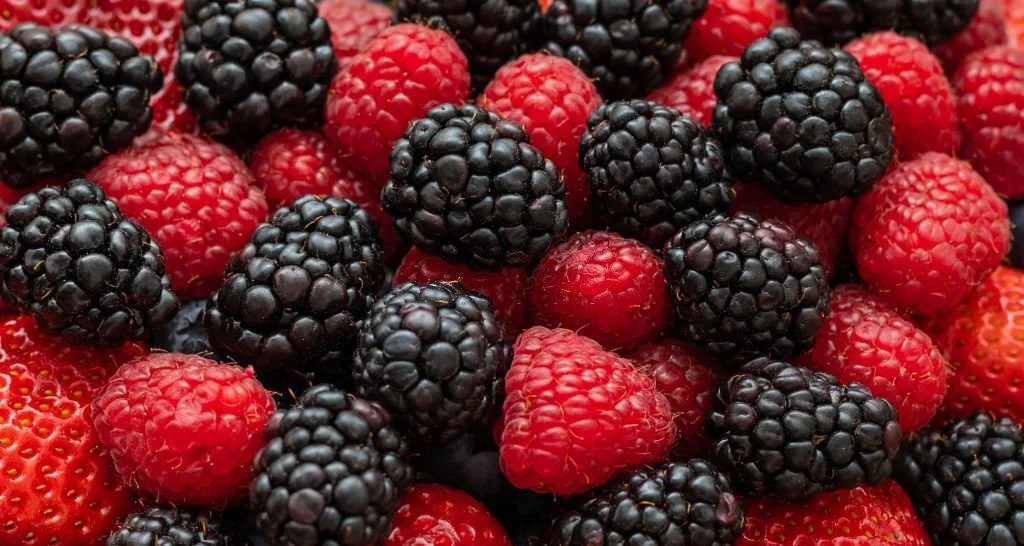Brambleberries, with their rich and inviting flavors, are a familiar presence in the world of berries. These berries, often associated with idyllic countryside scenes and homemade delicacies, hold a special place in the hearts of many. But what exactly are brambleberries, and what sets them apart from other berry varieties? In this guide, we’ll embark on a journey to unravel the mysteries of brambleberries, exploring their definition, characteristics, and the delightful diversity that makes them a cherished part of the berry family.
Definition of Brambleberries
To begin our exploration, let’s define what we mean by “brambleberries”:
- Brambleberries encompass a group of berries that belong to the Rubus genus, characterized by their thorny bushes or vines. While brambleberries represent a diverse array of berry types, they are united by their affiliation with the Rubus genus, which includes species like blackberries, raspberries, boysenberries, loganberries, and marionberries. This shared lineage ties these berries together and gives them their distinctive qualities, setting them apart in the world of berries.
Varieties of Brambleberries
Brambleberries present a delightful array of berry varieties, each with its own unique characteristics and flavors. Here are some of the most common varieties you may encounter:
- Blackberries: Blackberries are perhaps the most recognizable member of the brambleberry family. They are distinguished by their deep black color, sweet-tart flavor, and clusters of small, juicy drupelets. Blackberries are beloved for their versatility in both culinary and wild foraging endeavors.
- Raspberries: Raspberries are known for their delicate, hollow, and slightly conical structure. They come in various colors, including red, black, and golden varieties, each offering its distinct taste. Red raspberries are sweet-tart, while black raspberries have a more intense flavor. Golden raspberries are milder and slightly sweet.
- Boysenberries: Boysenberries are a delightful hybrid, resulting from a cross between blackberries, raspberries, and loganberries. They are characterized by their large size, deep purple to maroon color, and a sweet-tart flavor profile. Boysenberries are often used in pies, jams, and desserts.
- Loganberries: Loganberries are another hybrid, originating from the cross between blackberries and raspberries. They feature an elongated shape and are known for their slightly tangy taste, making them a unique addition to the brambleberry family.
- Marionberries: Marionberries are a type of blackberry known for their juicy, sweet flavor. They are dark and plump, making them a popular choice for jams, pies, and other delectable treats.
Characteristics and Flavors
While brambleberries span a range of varieties, they share some common characteristics and flavors that set them apart in the world of berries:
- Bushes and Vines: Brambleberries typically grow on thorny bushes or vines, often forming dense and impenetrable thickets in the wild. These thorny growths are a hallmark of brambleberry plants.
- Aggregate Fruits: Many brambleberries are considered aggregate fruits, meaning they consist of multiple smaller drupelets clustered together to create a single, collective berry. This clustered structure is a defining feature of brambleberries.
- Flavor Profile: Brambleberries are renowned for their sweet-tart flavor. The exact taste can vary among varieties and ripeness levels, offering a spectrum of flavors that range from mildly sweet to boldly tangy. This versatile flavor profile makes brambleberries ideal for various culinary applications, from jams and desserts to fresh snacking.
Brambleberries, with their intriguing diversity and shared characteristics, offer a tantalizing taste of nature’s bounty. Their presence adds charm to both wild landscapes and cultivated gardens, and their flavors enhance a wide range of culinary creations, making them a cherished component of the berry family.
Culinary Uses
Brambleberries, with their delectable flavors, find their way into an array of culinary creations. Here’s how they are commonly used in the kitchen:
- Fresh Enjoyment: Brambleberries are a delightful snack when enjoyed fresh. Their sweet-tart juiciness makes them a perfect choice for a healthy and flavorful nibble, either on their own or as part of a fruit salad.
- Jams and Preserves: Brambleberries, owing to their high pectin content, are prized for making jams, jellies, and preserves. The natural pectin allows these spreads to achieve a thick, spreadable consistency, capturing the essence of the berries for year-round enjoyment.
- Baking: Brambleberries are superb additions to various baked goods. They can elevate pies, muffins, tarts, cobblers, and crisps, infusing these treats with their sweet-tart essence. Their vibrant colors also make them a visually appealing choice for desserts.
- Smoothies: Blending brambleberries into smoothies introduces a burst of berry goodness. They pair well with yogurt, bananas, and other fruits, adding a refreshing and nutritious element to your morning or post-workout drink.
Conclusion
In conclusion, brambleberries, with their diverse varieties and shared sweet-tart flavors, hold a special place in the world of berries. Whether you encounter blackberries, raspberries, boysenberries, loganberries, or marionberries, each member of the brambleberry family offers a unique taste experience.
These berries, often found in wild and cultivated settings, are cherished for their versatility in the kitchen. From fresh snacking to making delectable jams and enhancing a wide range of baked goods, brambleberries have carved out a prominent role in culinary traditions.
So, the next time you savor a berry-laden dessert or pluck a ripe berry from a bramble in the countryside, take a moment to appreciate the wonderful world of brambleberries and the delightful flavors they bring to our tables and taste buds.




